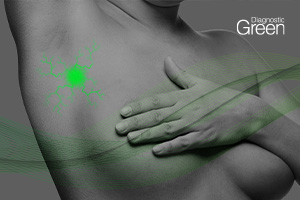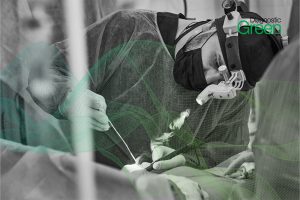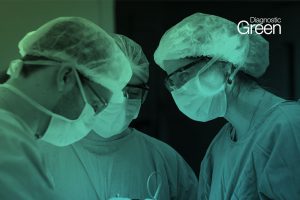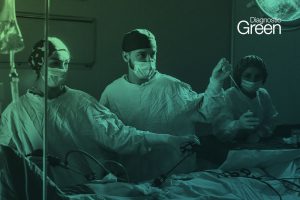Introduction: The use of Indocyanine green angiography (ICG-A) in oncoplastic breast-conserving surgery (OBCS) has not yet been investigated. This prospective trial applied ICG-A in volume displacement and replacement OBCS to localize perforators and determine tissue supplied by the perforator. Furthermore, to investigate and correlate the intraoperative ICG-A to postoperative surgical site infection, skin necrosis, epidermolysis, and timely onset of adjuvant therapy.
Methods: ICG-A was performed at three pre-set timepoints during surgery; after lumpectomy, upon dissection of possible perforators, and after wound closure. All patients were followed with clinical evaluations before surgery, 4 weeks, 4-6 months, and 12 months postoperatively.
Results: Eleven patients were included: seven volume displacement and four volume replacement OBCS. ICG-A located the tissue supplied by the perforator and demonstrated sufficient perfusion in all cases. The ICG-A corresponded to the surgeons’ clinical assessment. One patient developed a postoperative infection and seroma and was treated conservatively. No patients had postoperative necrosis, loss of reconstruction, or lymphedema of the arm. Edema of the breast occurred in four patients (36.4%). Scar assessments were significantly worse at 4-weeks and 4-6 months. The quality of life improved significantly during follow-up. Adjuvant treatment was administered timely in all cases.
Conclusion: ICG-A was feasible for OBCS in assessing intraoperative perfusion. Perfusion was sufficient in all patients and corresponded to the surgeon’s clinical evaluation. No patients developed postoperative necrosis. Though edema of the breast occurred in 36.4%, a larger sample size is needed to investigate a possible correlation with ICG-A. Further studies, which includes patients requiring extensive tissue replacement challenging the borders of perfusion, are needed.
https://www.jprasurg.com/article/S1748-6815(23)00419-9/fulltext




